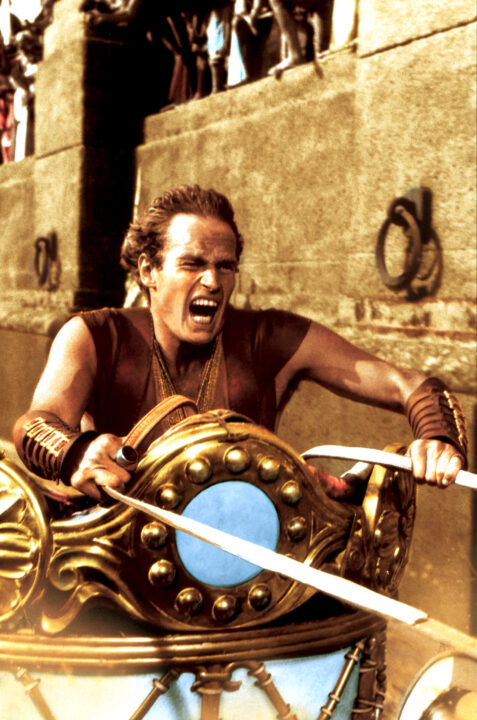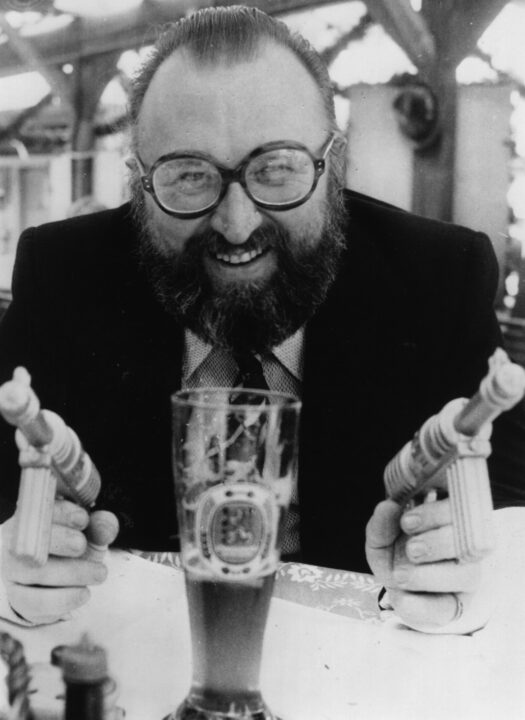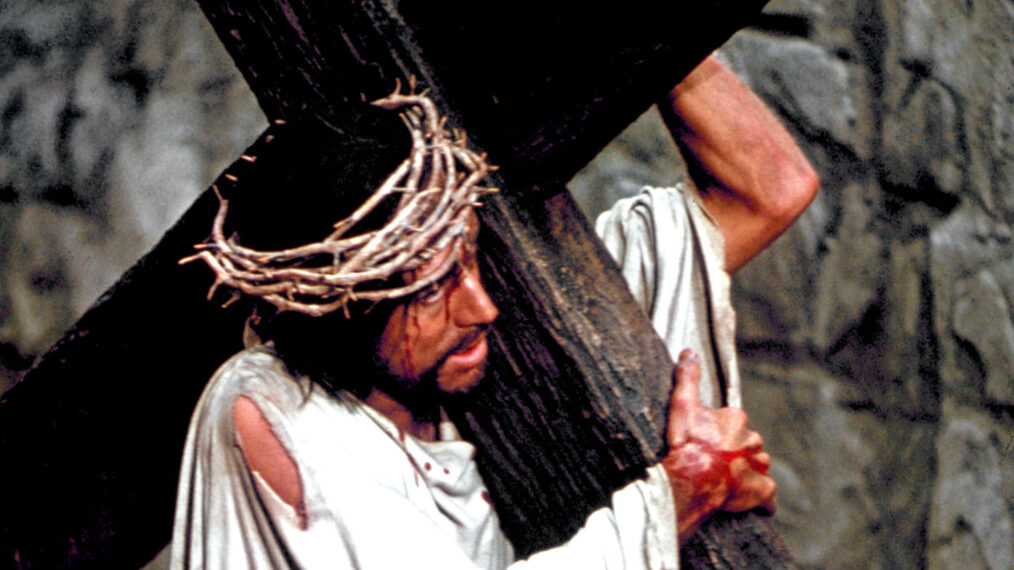5 Things You Didn’t Know About ‘Ben-Hur’

1959’s Ben-Hur — which airs today on TCM at 6 a.m. EST — isn’t just one of the most popular religious films of all time. The three-plus hour epic starring Charlton Heston as the titular Jewish-prince-turned-Roman-slave-turned-chariot champion who crosses paths with Jesus Christ is one of the most popular films of all time, period. The highest-grossing film of 1959, it also won a record-busting 11 Academy Awards, including Best Picture, Best Director and Best Actor for Heston, and today remains an Easter classic for families around the world.
But before it was a beloved classic, it was an overbudget, overschedule production disaster that was subject to public legal disputes before it was even released — and, with a budget of $15 million, was the costliest film ever produced at the time. It turns out like, much like its hero, Ben-Hur overcame the odds stacked against it.
Here are five things you probably don’t know about this chariot-tastic classic.
1It’s based on a book and a silent movie

Everett Collection
Though Ben-Hur was part of the 1950s and ’60s wave of religious epics, it was actually a remake of a 1925 silent film — one on which director William Wyler had actually been an assistant director on. Of course, when Wyler was approached to helm the 1959 version, he was in a very different position that he’d be in in 1925, when he was only 23 years old — by 1959, he had already won two Best Director Oscars, for 1942’s Mrs. Miniver and 1946’s The Best Years of Our Lives.
But before either version of the film existed, there was a 500+ page novel called Ben-Hur: A Tale of Christ, published in 1880 by Lew Wallace. You may not have heard of it, but your great grandparents definitely did — it sold millions of copies, and remained one of the all-time bestselling books in the U.S. until 1936 (!).
2It led to a legal dispute before the film even premiered
![1959: Best Actress SIMONE SIGNORET [Room at the Top] and Best Actor CHARLTON HESTON [Ben-Hur] toast each other with their Oscars, 4/4/60](https://www.remindmagazine.com/wp-content/uploads/2025/04/heston-oscar-651x720.jpg)
Everett Collection
Once the script was finished, who to credit, predictably, became a complex and emotionally charged situation. Wyler pushed to get Tunberg and Fry shared screenplay credit; the Screen Writers Guild (of which Tunberg was a former president) ruled that Tunberg should get sole credit.
The dispute didn’t end there, however. Wyler began a public publicity campaign to get Fry credit on the film; the Screen Writers Guild responded by taking out advertisements in newspapers suggesting that Wyler did not take Hollywood’s screenwriting credit system seriously. When Heston thanked Fry in his Academy Awards acceptance speech, the Writers Guild sent him a letter suggesting that he, too, was trying to impugn the authority of the Guild.
3All the era’s biggest actors passed on the role

Everett Collection
Sure, most major films have a list of stars who passed or almost took the lead role. But considering Ben-Hur‘s budget and eventual success, the line-up of A-listers who passed is pretty impressive: Paul Newman, Marlon Brando, Rock Hudson, and Leslie Nielsen gave the film a thumbs down. Burt Lancaster supposedly hated the script on two levels: he thought it didn’t approach the story of Christ with the necessary gravity and seriousness, and he thought it was boring. So Heston, who had had a breakthrough with 1956’s The Ten Commandments but wasn’t yet a superstar, took on the role — and won his first and only Oscar as a result.
4A future cinema superstar worked as an assistant on the film

Keystone/Getty Images
Much of Ben-Hur was shot in Italy — which is when the production crossed paths with a young assistant who would go on to have a groundbreaking film career of his own. Sergio Leone is best known as the director of A Fistful of Dollars and Once Upon a Time in America, the man who discovered Clint Eastwood, and the creator of the “spaghetti Western.” But when the shoot for Ben-Hur came rolled into Rome in 1958, Leone was an assistant director ins his late 20s; he had previously worked on the 1951 religious epic Quo Vadis, which was also shot in Rome. Leone was hired on as an assistant director, and was said to have been responsible for filming the re-takes of Ben-Hur‘s famous chariot race.
The following year, Leone got his big break, though via some unfortunate circumstances: he had been hired to assistant direct on the Steve Reeves film The Last Days of Pompeii. When original director Marion Bonnard fell seriously ill on the first day of shooting, Leone covered for him, earning his first directing credit in the process. He would release his first hit, A Fistful of Dollars, just a few years later, in 1964.
5The chariot race was shot on the biggest set of all time
Speaking of the famous chariot race — though the action runs for nine nail-biting minutes in the completed film, the only description of the event given in the original film was three words: “the chariot race.” Second unit directors Andrew Marton and Yakima Canutt fleshed that out into 38 pages of detailed action, stunt instructions, and camera angles.
Even for a film shoot known for its excesses (the film employed 50,000 extras!), the over-the-top production details of the chariot race scene stand out. The 18-acre arena used in the chariot race scene took over a year to build, and was the largest film set of all time at the time. The horses used in the scene specially trained for over six months, and an infirmary was built on the set, staffed by multiple doctors and nurses, to deal with any injuries that came up during the shoot.
There was one injury in the chariot shoot — and it made it into the final film. Stuntman Joe Canutt (sone of Yakima Canutt) doubled for Heston during the chariot race’s action shots; he was unexpectedly launched from the chariot into the air when Ben-Hur’s chariot jumps another chariot’s wreckage. The scene where Ben-Hur is almost thrown from his chariot but clings on makes use of the actual footage of Canutt’s injury.

The Chosen: The Last Supper
Immerse yourself in the extraordinary world of "The Chosen" with this special Easter edition collector's magazine, a comprehensive tribute to the groundbreaking biblical drama series.
Buy This Issue
